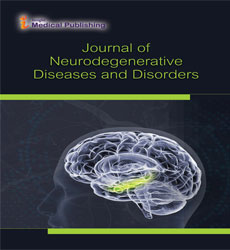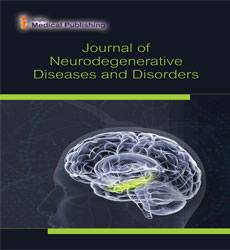A Brief Note on Ataxia and it Types
S.M. Wrigley*
Department of Neurology, Cork University Hospital, Ireland
- *Corresponding Author:
- S.M. Wrigley Department of Neurology, Cork University Hospital, Ireland, Email: sarah.wrigley.21@ucl.ac.uk
Received: December 03, 2021; Accepted: December 17, 2021; Published: December 24, 2021
Citation: S.M. Wrigley (2021) A Brief Note on Ataxia and it Types. J Neurodegenero Dis Disord Vol.4 No.1: e004.
Introduction
Ataxia is a neurological disorder that involves the lack of intentional communication of muscle growth which may include abnormal movement, speech changes, and abnormalities in eye development. Ataxia is a clinical manifestation of fractures of the nervous system that connects development, such as the cerebellum. Ataxia can be blocked on the side of the body, which is referred to as hemiataxia. There are a number of possible causes for these examples of emotional breakdown. Dystaxia is a mild form of ataxia. Friedreich's ataxia has an unusual movement as a well-presented indicator.
Types: The term cerebellar ataxia is used to indicate ataxia due to fracture of the cerebellum. The cerebellum is responsible for consolidating many neural data used to plan continuous development and participate in engine planning. Despite the fact that ataxia is not present in all cerebellar lesions, many conditions affecting the cerebellum actually cause ataxia. People with cerebellar ataxia may have difficulty managing strength, range, load, speed, and muscle relaxation music. This results in a type of unexpected branding, a vicious development that can manifest itself in many potential ways, for example, asthenia, asynergy, delayed response time, and dyschronometria. People with cerebellar ataxia may also show mobility, eye development problem, dysarthria, dysphagia, hypotonia, dysmetria, and dysdiadochokinesia. These defects can change depending on where the cerebellar structure is damaged, and whether the injury is one-sided or one-sided. People with cerebellar ataxia may initially have an unhealthy balance, which may be manifested as the inability to sit on one leg or the couple's feet. As the situation progresses, mobility is defined as an extended base and higher performance, as well as surprises and staggering from one side to the other. Turning is also dangerous and can lead to falls. As cerebellar ataxia becomes more severe, amazing help and exertion are expected to stop and go away. Dysarthria, the underlying weakness, can also be diagnosed and described by “examining” speech that includes a slow rate, an unexpected mood, and a variable volume. In addition, slurred speech, vocal cords, and ataxic breathing may be possible. Cerebellar ataxia may cause developmental disorders, especially in very remote areas. Excessive bloating (or hypermetria) occurs with a fingerto- nose examination and a heel-to-shin examination; thus, dysmetria appears. Weakness associated with fluctuations (dysdiadochokinesia), as well as dysrhythmia, may also be indicated. Tethering in the head and body (tettering) may be found in people with cerebellar ataxia. The ability to communicate is formed in a related area where the key member is moved. For example, in the event that a development is expected to meet the purpose before the body, bending the shoulder can increase strength in the elbow, while elongation of the elbow can increase strength in the wrist. These forces accelerate the development of development and need to be rehabilitated and reversed in order to facilitate integrated development. This may, in line with these lines, result in reduced interactions with higher development speeds and increased speeds.

Open Access Journals
- Aquaculture & Veterinary Science
- Chemistry & Chemical Sciences
- Clinical Sciences
- Engineering
- General Science
- Genetics & Molecular Biology
- Health Care & Nursing
- Immunology & Microbiology
- Materials Science
- Mathematics & Physics
- Medical Sciences
- Neurology & Psychiatry
- Oncology & Cancer Science
- Pharmaceutical Sciences
